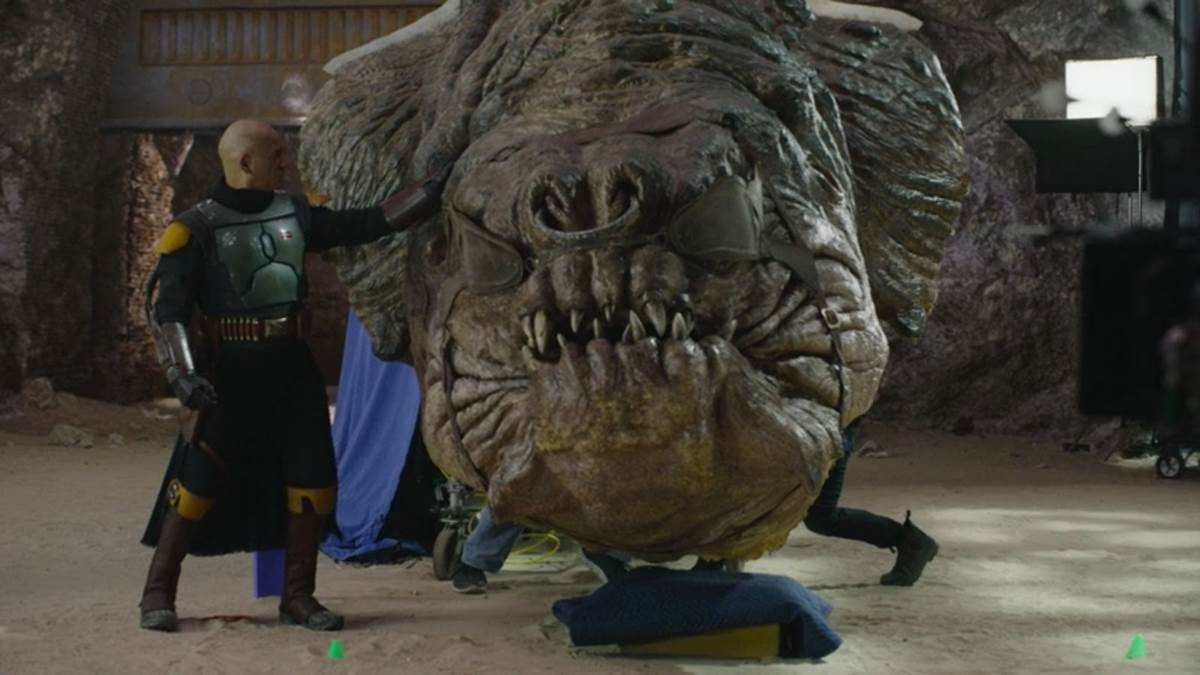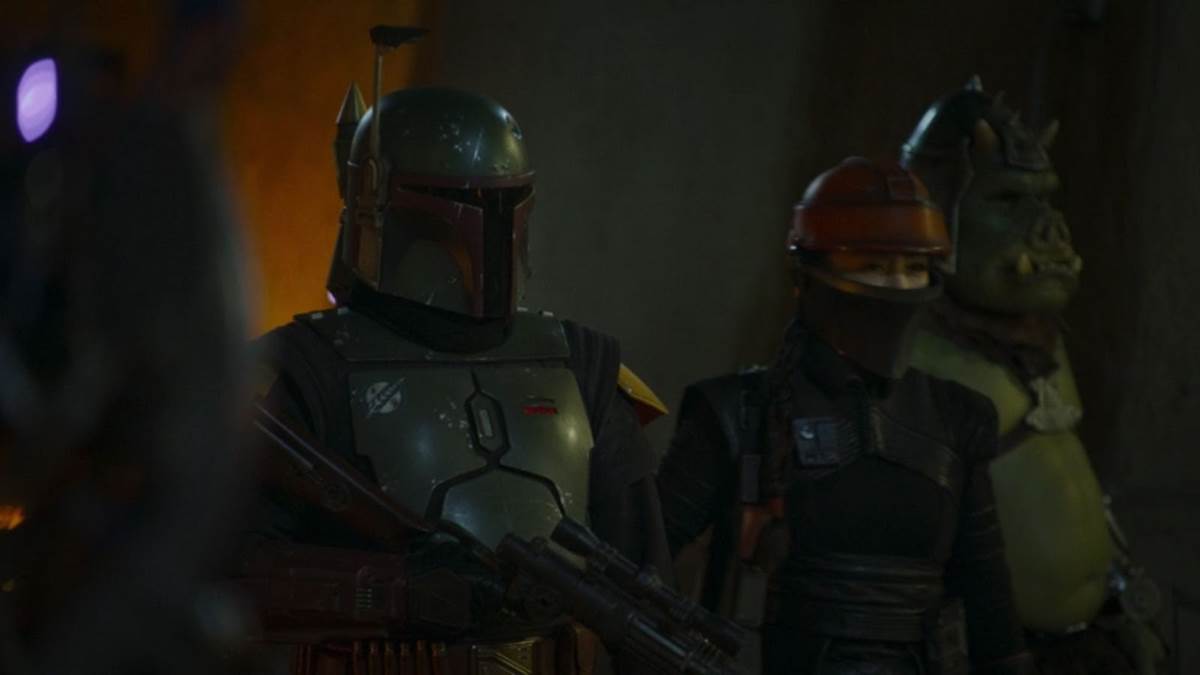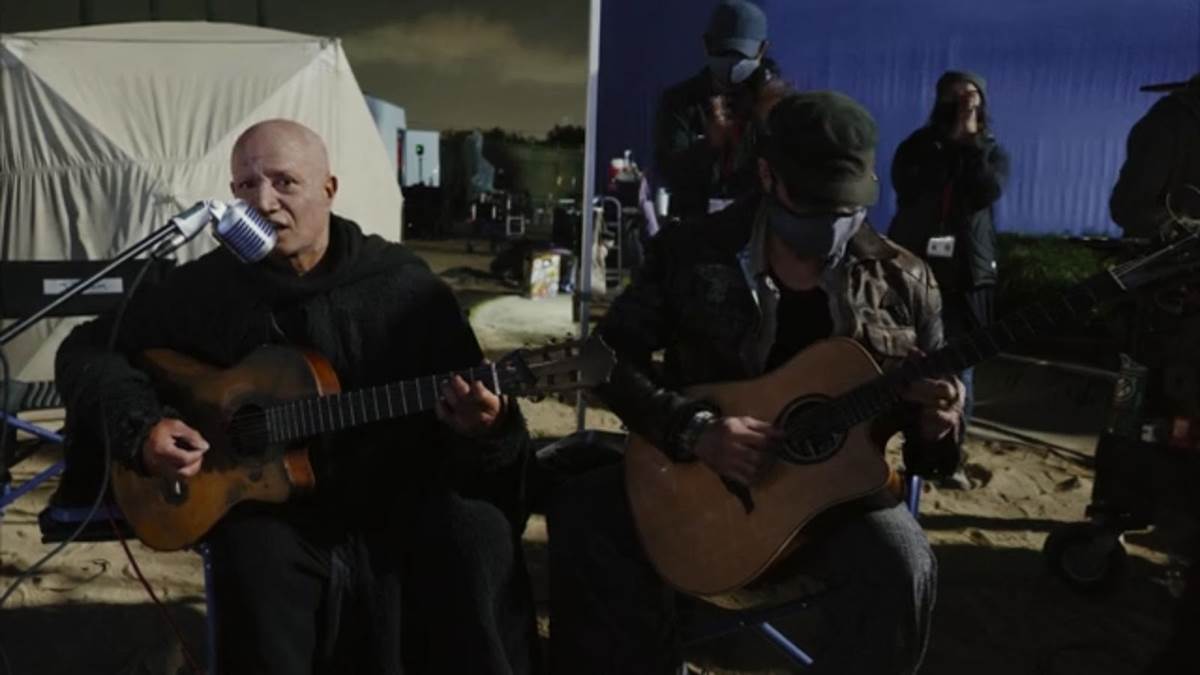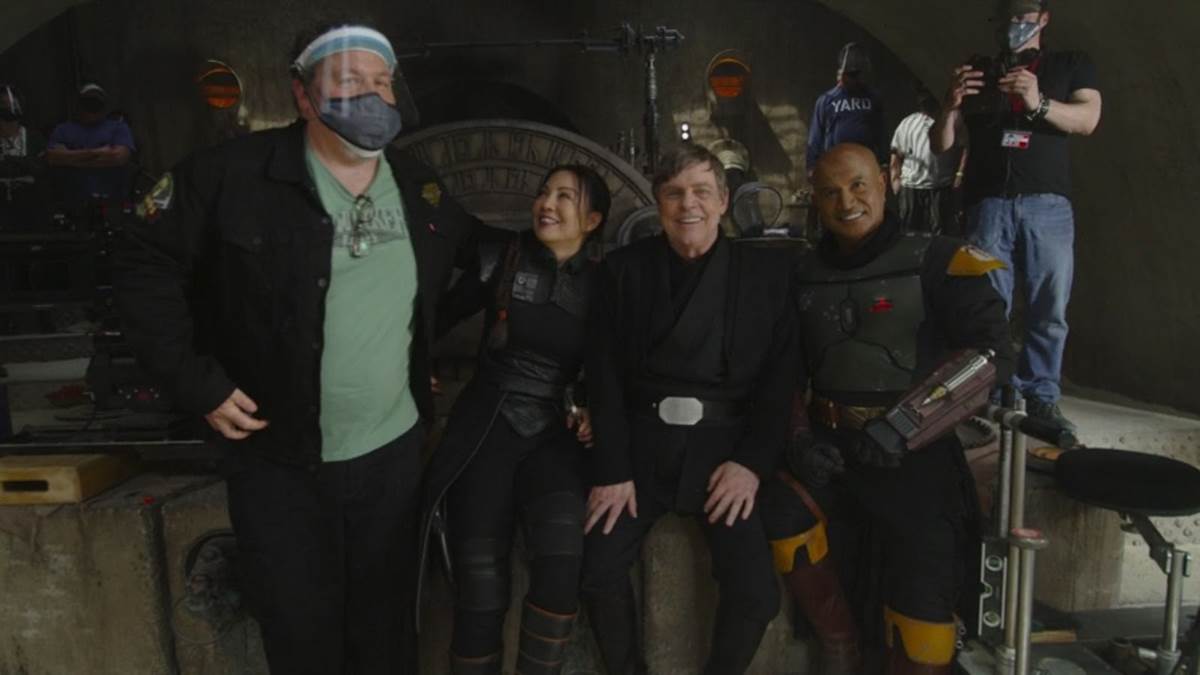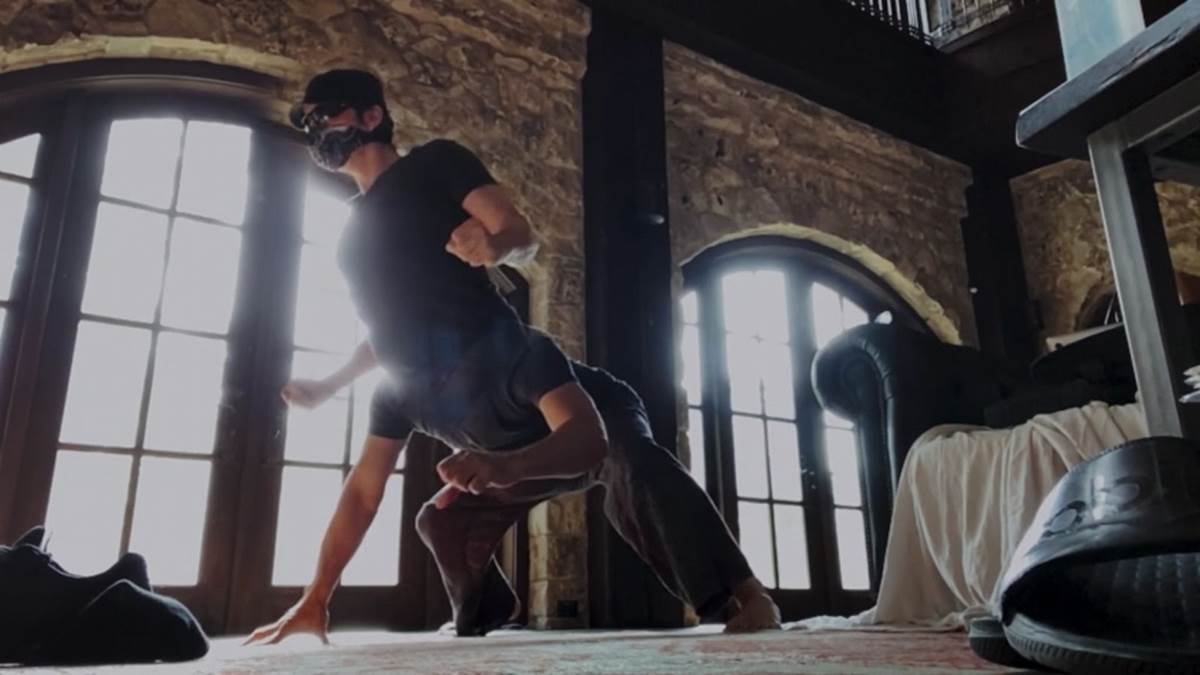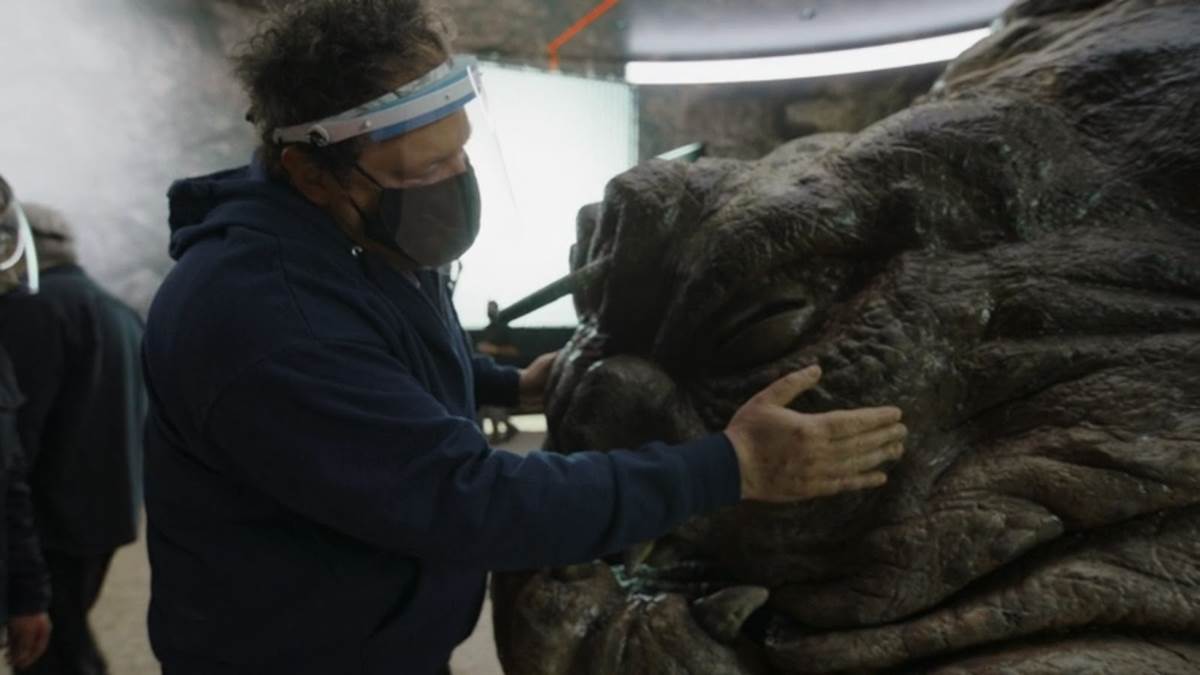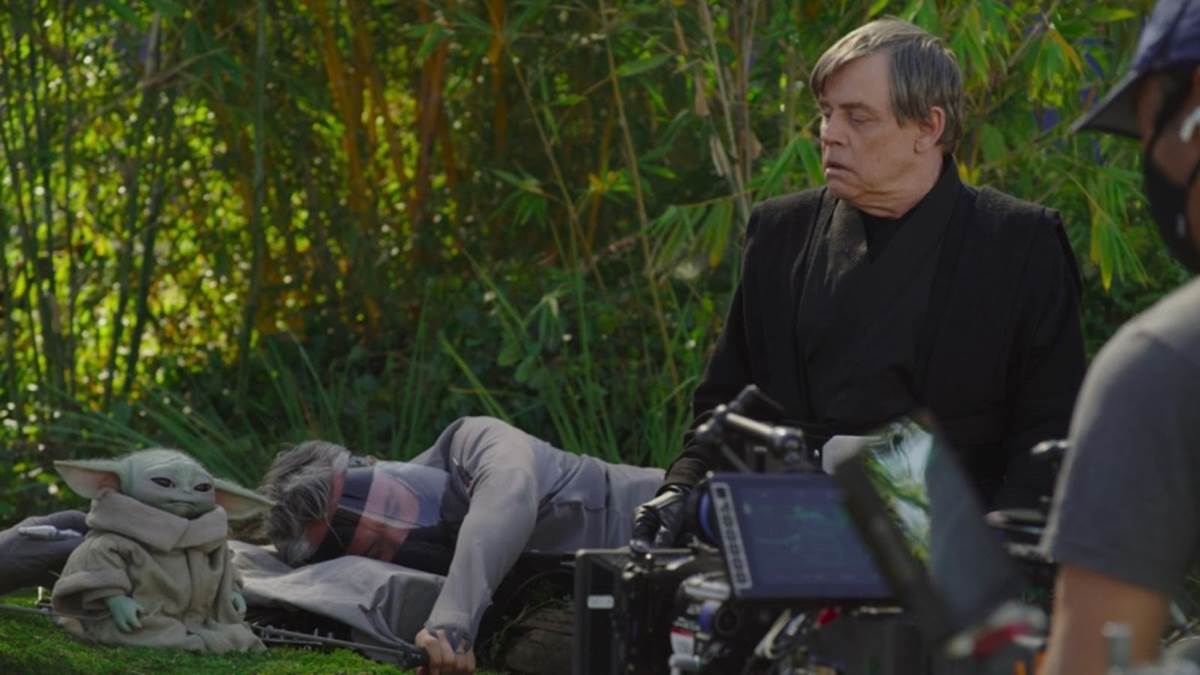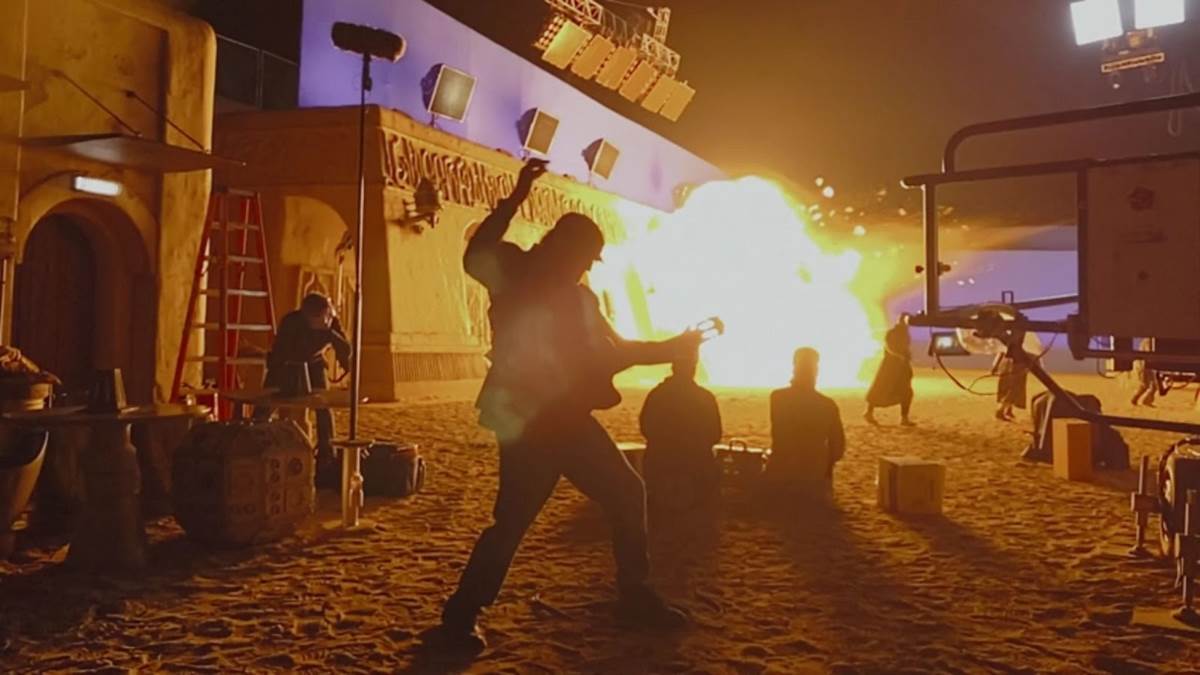The new Disney+ behind-the-scenes documentary Disney Gallery: The Book of Boba Fett was released today on Disney+ in celebration of Star Wars Day, and it’s chock full of fascinating tidbits about the production of this live-action Star Wars series.
In the bullet-point list below, I enumerate the most interesting factoids. Anecdotes, and enlightening stories we learned from Lucasfilm in Disney Gallery: The Book of Boba Fett.
- Director / Executive Producer Robert Rodriguez says that he was inspired by George Lucas as an independent filmmaker.
- We see Executive Producer Jon Favreau petting the life-size Rancor puppet head. He says he and the other creators of this series want nothing more than to pay respect to Star Wars.
- There’s a shot of Favreau and Executive Producer Dave Filoni planning the scene in which Luke Skywalker offers Grogu Yoda’s lightsaber. They’re wearing masks and face shields in accordance with COVID-19 safety regulations.
- Filoni says his philosophy is to make Star Wars feel like one big connected galaxy.
- Favreau says Boba Fett initially inspired The Mandalorian, so it’s appropriate that the character is finally getting his due in this universe.
- We see actor Temuera Morrison reading a script for The Book of Boba Fett aloud.
- Lucasfilm President Kathleen Kennedy talks about George Lucas’s casting of Morrison for Boba Fett in Star Wars: Episode II – Attack of the Clones. Evidently it was Lucas’s suggestion to bring back Temuera as Fett in live-action.
- Rodriguez says Temuera Morrison “is Boba Fett,” because he’s so similar to the character.
- Morrison says he drew on his Maori roots for his approach to Boba Fett.
- We see Rodriguez and Morrison playing guitar together and making up a song called “The Sarlacc Pit Blues” about cruising on a Bantha on the sands of Tatooine.
- Rodriguez says he was brought on as an executive producer of The Book of Boba Fett because Favreau and Filoni liked his work in The Mandalorian episode “The Tragedy.”
- Concept artist Doug Chiang talks about the challenges of explaining what happened after Boba Fett fell into the Sarlacc Pit. “How could he survive?”
- We see the practical set of the interior of the Sarlacc’s gut as Rodriguez shoots Fett’s escape scene.
- Filoni talks about how Fett’s experience in the Sarlacc fundamentally changes him as a character. “How could it not?”
- Favreau discusses why The Book of Boba Fett couldn’t be about the title character having questionable morality and going around the galaxy killing people. “That’s not Star Wars.”
- Filoni and Favreau say The Book of Boba Fett is inspired by gangster movies and Conan the Barbarian.
- The next section of the documentary is all about the character of Fennec Shand and the actress who portrays her, Ming-Na Wen.
- Rodriguez talks about the “Fennec Look” he helped develop, in which Shand would end a scene by giving Fett a look that “spoke volumes.”
- As a big Star Wars fan, Wen geeks out about seeing the droid 8D8 on set and getting to ride a Bantha.
- We see Favreau, Wen, and Morrison posing for a photo with Mark Hamill (dressed in Luke’s black Jedi outfit) on Boba Fett’s throne room dais.
- Morrison gushes about his working relationship with Wen.
- We see Rodriguez helping to choreograph the fight scene between Fett, Shand, and the assassins in the first episode.
- They wanted the Tusken Raiders to look unlike any tribe we had seen before.
- The Massiffs were partially practical puppets on set.
- Rodriguez demonstrates how he helped design the concept of the sand creature and how it moved using a crude maquette and animatics.
- We get some more discussion of the Tuskens and which movies inspired the train heist episode, like Lawrence of Arabia.
- Director Steph Green talks about why the original plan changed for Fett’s induction into the Tusken tribe, and how they came up with the “group movement” sequence. Morrison says he brought some of his Maori energy to that scene.
- We see Mayor Mok Shaiz performed as a fully practical puppet and costume on set. Filoni talks about the legacy of the “Hammerhead” (Ithorian) species in Star Wars.
- The next section is all about Garsa Fwip’s Sanctuary and the costume designs for that location.
- Actress Jennifer Beals talks about how the Sanctuary was inspired by Rick’s Cafe in Casablanca.
- We learn about the character of Black Krrsantan and his performer Carey Jones.
- Krrsantan’s mask worked with an innovative mechanical system that allowed Jones to control his mouth movements by opening and closing his own mouth.
- We see fight choreography and Morrison training for his battles in the series. Morrison talks about how he learned to fight with the Gaffi stick.
- Director Kevin Tancharoen talks about how he approached his episode and the scene where Fennec Shand receives her cybernetic upgrades.
- Favreau talks about the introduction of the “Mods” and how attitudes change over generations, even in the Star Wars universe.
- Favreau describes The Book of Boba Fett as “The Addams Family version of The Mandalorian” because of the “haunted castle” that is Jabba’s Palace.
- The Industrial Light & Magic visual effects artists talk about recreating the Rancor pit down to the last detail.
- “You have to be a dog lover to really appreciate the Rancor,” says actor Danny Trejo.
- Chiang talks about preserving the charm of the Rancor that we first saw in Return of the Jedi.
- The Rancor was a combination of practical and CGI, even in the later scenes featuring Boba Fett riding it.
- Favreau talks about the decision to bring the Mandalorian Din Djarin into the story of The Book of Boba Fett.
- Director Bryce Dallas Howard talks about the evolution of Djarin as a character.
- Favreau says introducing the backstory of Mandalore here is similar to the backstory of the Clone Wars when it was first mentioned in the original Star Wars film.
- The visuals of the “Purge of Mandalore” sequence were inspired by the movie Jarhead.
- Doug Chiang discusses the N-1 Naboo starfighter and what it meant to him bringing it back for this series. Favreau compares this ship to the hot rods in George Lucas’s American Graffiti.
- We see how they shot the starfighter flight sequence on the Volume.
- The next segment is all about Luke Skywalker and Mark Hamill’s experience on set of The Book of Boba Fett. We see Hamill actually acting out the scenes in costume with Grogu.
- Filoni believes Luke is going down the Qui-Gon Jinn path of Jedi tradition and beliefs. He also discusses the challenges and thematic resonances of putting Ahsoka Tano on-screen together with Luke.
- Rosario Dawson didn’t know until the day they were shooting that she was going to meet Luke Skywalker, because her script said “Plo Koon” to better keep the secret.
- Luke Skywalker was also performed by a younger stand-in named Graham Hamilton, but Hamill helped guide his performances on set.
- The VFX team talks about the progress they’ve made with the technology used to bring the de-aged Luke Skywalker to life. They talk about hiring Sam Head via Twitter after he demonstrated Deepfake skills using footage from The Mandalorian.
- We see the crew using a puppet Grogu on set for some of the training sequences. Chiang says they didn’t have to add a lot of CGI enhancements to make it work.
- The final part of the documentary is about shooting The Book of Boba Fett’s finale episode.
- Robert Rodriguez had to persuade Jon Favreau to let him direct the finale, after assuming that Favreau himself would direct it.
- Much of the action in the finale was shot on real physical sets rather than on the Volume, which made Rodriguez very happy.
- Favreau and Filoni talk about how the team translated the character of Cad Bane from animation to live-action. “We had to get the hat just right.”
- Favreau talks about the Kaiju and King Kong influences on the Rancor sequence in Mos Espa.
- Filoni discusses what Grogu learned from Luke and how he uses that knowledge to sedate the Rancor.
- To wrap up the documentary, Favreau and Morrison talk about the themes of community and creating something bigger than yourself that run through The Book of Boba Fett.
- Lastly, Rodriguez and Filoni talk about what working on this series meant to them.
Disney Gallery: The Book of Boba Fett is available to stream exclusively on Disney+.
Sign up for Disney+ or the Disney Streaming Bundle (Disney+, ESPN+, and ad-supported Hulu) now

